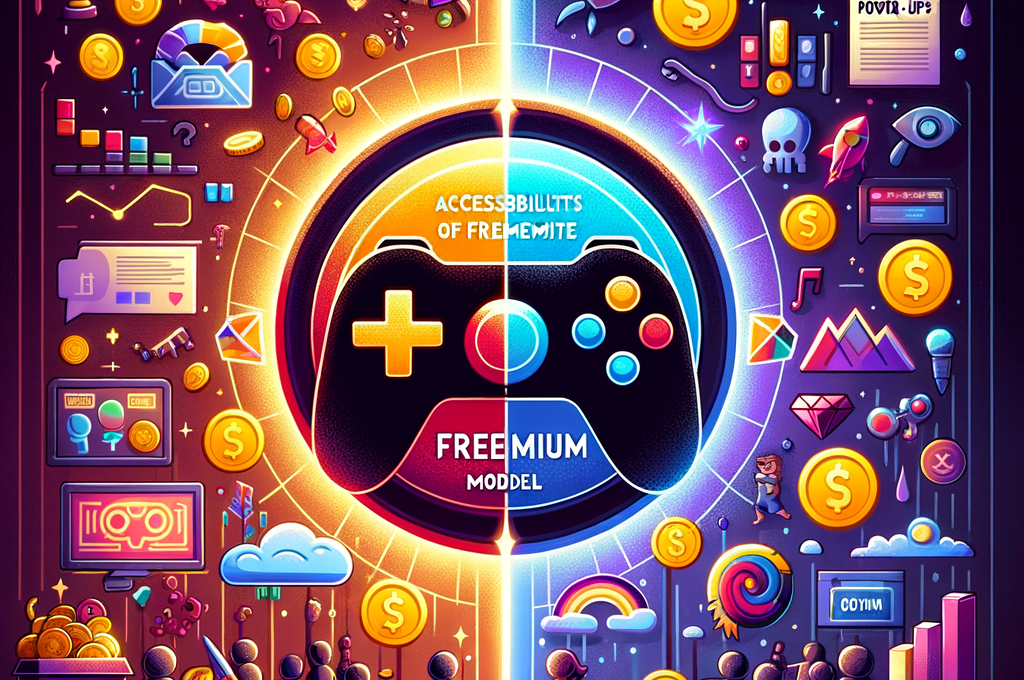
The gaming industry has undergone a significant transformation over the past decade, largely due to the rise of the freemium model. Free-to-play (F2P) games have become a dominant force, attracting millions of players worldwide. This article delves into the impact of freemium models, examining both the advantages and disadvantages of free-to-play games. By exploring relevant examples, case studies, and statistics, we aim to provide a comprehensive understanding of this prevalent business model.
What is the Freemium Model?
The term “freemium” is a portmanteau of “free” and “premium.” In the context of gaming, it refers to games that are free to download and play but offer in-game purchases for additional content, features, or advantages. These purchases can range from cosmetic items to gameplay enhancements. The freemium model has become particularly popular in mobile gaming, but it is also prevalent in PC and console games.
Pros of Free-to-Play Games
Accessibility
One of the most significant advantages of free-to-play games is their accessibility. Since these games are free to download, they attract a broad audience, including players who may not be willing to pay upfront for a game. This wide reach can lead to a larger player base and increased community engagement.
Revenue Potential
While the games are free to play, the in-game purchases can generate substantial revenue. According to a report by SuperData, the global free-to-play market generated $87.1 billion in 2020, accounting for 78% of the total digital games market. Popular games like “Fortnite” and “League of Legends” have demonstrated the lucrative potential of this model.
Continuous Updates and Content
Freemium games often receive regular updates and new content to keep players engaged. This ongoing support can enhance the longevity of a game, ensuring that players remain interested and invested. Developers can use the revenue from in-game purchases to fund these updates, creating a cycle of continuous improvement.
- Increased player base
- Higher revenue potential
- Regular updates and new content
Cons of Free-to-Play Games
Pay-to-Win Concerns
One of the most common criticisms of free-to-play games is the “pay-to-win” model. In some games, players who spend money on in-game purchases can gain significant advantages over those who do not. This can create an uneven playing field and lead to frustration among non-paying players.
Addiction and Spending
The freemium model can encourage addictive behavior, as players may feel compelled to make repeated purchases to progress or stay competitive. A study by the University of Adelaide found that 5% of players account for 50% of in-game revenue, indicating that a small percentage of players are spending significant amounts of money. This can lead to financial strain and problematic gaming habits.
Quality and Depth
Some critics argue that free-to-play games may lack the quality and depth of traditional, paid games. The focus on monetization can sometimes result in a less immersive experience, with gameplay designed to encourage spending rather than providing a rich, engaging experience.
- Pay-to-win concerns
- Potential for addiction and overspending
- Possible lack of quality and depth
Case Studies
Fortnite
“Fortnite,” developed by Epic Games, is one of the most successful free-to-play games. Launched in 2017, it quickly gained popularity, amassing over 350 million registered players by 2020. The game’s revenue model relies on the sale of cosmetic items and battle passes, which offer exclusive rewards. Despite being free to play, “Fortnite” generated $1.8 billion in revenue in 2019 alone.
League of Legends
Another notable example is “League of Legends,” developed by Riot Games. Released in 2009, it has become one of the most popular esports titles globally. The game offers in-game purchases for cosmetic items and champions, contributing to its financial success. In 2020, “League of Legends” generated $1.75 billion in revenue, demonstrating the enduring appeal of the freemium model.
Conclusion
The freemium model has undeniably transformed the gaming industry, offering both benefits and drawbacks. On the one hand, it has made games more accessible, generated significant revenue, and allowed for continuous updates and content. On the other hand, it has raised concerns about pay-to-win mechanics, addiction, and the potential for lower-quality experiences. As the industry continues to evolve, it is crucial for developers to strike a balance between monetization and providing a fair, engaging experience for all players.
Question and Answer Section
Q: What is the freemium model in gaming?
A: The freemium model refers to games that are free to download and play but offer in-game purchases for additional content, features, or advantages.
Q: What are some advantages of free-to-play games?
A: Advantages include increased accessibility, higher revenue potential, and regular updates and new content.
Q: What are some disadvantages of free-to-play games?
A: Disadvantages include pay-to-win concerns, potential for addiction and overspending, and possible lack of quality and depth.
Q: Can you provide examples of successful free-to-play games?
A: Examples include “Fortnite” and “League of Legends,” both of which have generated significant revenue through in-game purchases.
Check out our app


